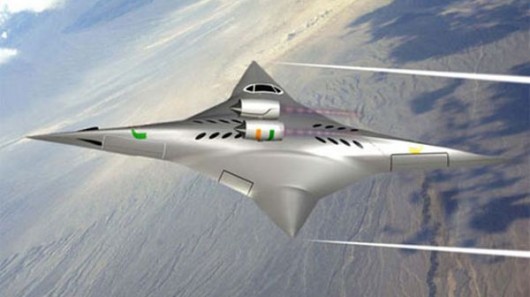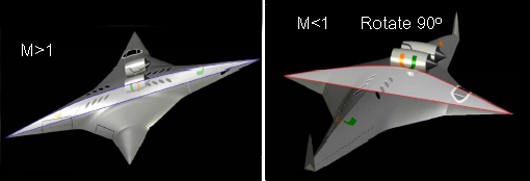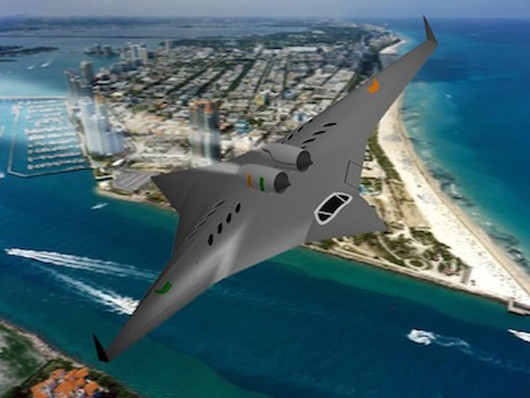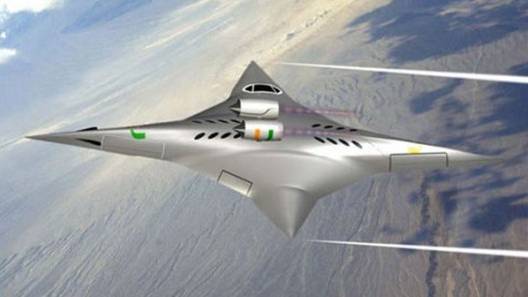Radical bi-directional flying wing design gets NASA funding
Source: gizmag.com
A team that has created a supersonic jet design resembling a flying shuriken has been awarded a US$100, 000 grant from NASA’s Innovative Advanced Concepts (NIAC) program to continue development of the aircraft. Aside from looking suitably futuristic, the concept plane’s four-pointed star design serves a practical purpose. By rotating in mid air, the plane can transition between broad-wing subsonic and shorter wingspan supersonic configurations.
The supersonic bi-directional flying wing (SBiDir-FW) aircraft in high-speed configuration.
Aircraft design is usually a compromise between subsonic and supersonic performance. At low speeds, broad wings provide more lift and help minimize takeoff distance, while swept back wings with a smaller profile enhance performance at high speeds. Variable-sweep wing (or swing wing) aircraft, such as the F-14 Tomcat and B-1 Lancer, get around this with wings that are spread broadly at takeoff and low speeds and can be swept back while in flight for improved performance at high speeds.
The supersonic bi-directional flying wing (SBiDir-FW) aircraft tackles the problem in a different way. It would take off in one orientation with broader wings, before rotating 90 degrees in flight to transition to high-speed mode with a shorter wing span.
“No matter how fast a supersonic plane can fly, it needs to take off and land at very low speed, which severely hurts the high-speed supersonic performance for a conventional airplane,” said Ge-Chen Zha, a professor in the University of Miami’s College of Engineering and principal investigator of the project. “The SBiDir-FW removes this performance conflict by rotating the airplane to fly in two different directions at subsonic and supersonic. Such rotation enables the SBiDir-FW to achieve superior performance at both supersonic and subsonic speeds.”


While conventional commercial aircraft consist of a tube-shaped fuselage attached to two wings that responsible for generating lift, as a flying wing, the entire surface of the SBiDir-FW is used to generate lift. Passengers and cargo would be contained within the wide span, thick, rounded airfoil used at low speeds, while the high-speed wing would have a shorter span and a thin-sharp-edged airfoil to reduce drag at supersonic speed.
[...]
Read the full article at: gizmag.com






















